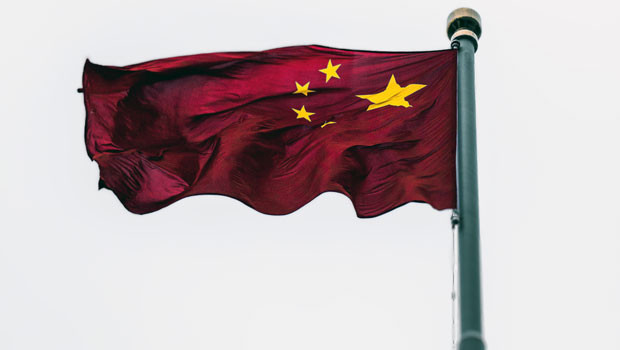Asia report: Stocks mixed as China announces modest growth target

Regional stock markets in Asia were mixed on Monday as investors analysed China's new, more modest growth targets set in its latest parliamentary sessions.
The Nikkei 225 in Japan rose by 1.11% to 28,237.78, while the Topix increased by 0.84% to 2,036.49.
Those gains for the benchmark index were primarily driven by Shin-Etsu Chemical, Tokyo Electron, and SUMCO Corporation, which increased by 3.13%, 3.12%, and 2.85%, respectively.
In China, the Shanghai Composite and Shenzhen Component decreased by 0.19% to 3,322.03 and 0.08% to 11,842.88, respectively.
The decline was primarily driven by CIG Shanghai, which decreased by 6.11%, and Fuzhou Rockchip Electronics, which decreased by 5.92%.
Hong Kong's Hang Seng Index rose by 0.17% to 20,603.19, led by China Petroleum & Chemical Corporation, CNOOC, and China Mobile, which increased by 3.45%, 3.45%, and 3.23%, respectively.
In South Korea, the Kospi rose by 1.26% to 2,462.62, driven by ISU Chemical, which rose by 29.84%, and Wellbiotec, which rose by 23.93%.
The S&P/ASX 200 in Australia rose by 0.62% to 7,328.60, with Block increasing by 5.5% and Macquarie Group increasing by 2.44%.
In New Zealand, the S&P/NZX 50 rose by 0.37% to 11,912.48, led by EBOS, which increased by 2.85%, and ANZ Holdings, which increased by 1.69%.
On the currency front, the dollar strengthened 0.19% against the Japanese yen, trading at JPY 136.13.
The Australian dollar and New Zealand dollar meanwhile both weakened 0.72% against the greenback, with the Aussie last trading at AUD 1.4878 and the Kiwi at NZD 1.6193.
In the commodities market, Brent crude futures were last down 1.53% on ICE at $84.52 per barrel, while the NYMEX quote for West Texas Intermediate was down 1.52% to $78.47.
“Asian equities carried over the strength seen at the close of trading last week on Wall Street - once again the Nasdaq was the outperformer stateside,” said Patrick Munnelly at TickMill Group.
“The positive impetus in Asian markets waned somewhat as China reduced its economic growth target to circa 5% - this underwhelmed investors as the China re-opening narrative and growth expectations underpinned Asian markets last week.
“The reduced growth target is now set at the slowest pace in nearly two decades - the move has led to investors paring exposure to commodities and metals the go-to proxies for the China reopening plays.”
On the economic news agenda, China set a growth target of around 5% for 2023 over the weekend, according to premier Li Keqiang's work report released on Sunday.
The announcement was a surprise for analysts, who were expecting the People’s Republic to set a target of above 5% for the year.
According to CNBC, the average forecast for growth was 5.24%.
Alongside the GDP target, China also set a goal of 3% for the consumer price index and a 5.5% unemployment rate for people in cities, with the creation of around 12 million new urban jobs - higher than the 11 million target set last year.
“Asian markets were broadly positive, despite some initial disappointment last week that the Chinese authorities chose a cautious outlook on growth of 5%, as compared to the 5.5% which investors had been anticipating,” said Interactive Investor head of markets Richard Hunter.
“However, there are an increasing number of signs that the much awaited Chinese economic rebound is starting to gain traction following the lifting of restrictions, underpinned by sporadic measures of support from the authorities in an effort to hasten the rebound.”
Elsewhere, South Korea's consumer price index rose 4.8% year-on-year in February, bringing inflation levels below 5% for the first time in 10 months.
Compared to a month ago, prices increased 0.3%, with falling food prices and rising utilities.
The numbers came as a relief from January's 5.2% rate of inflation.
South Korea meanwhile also announced it would resume trade talks with Japan.
Kang Gam-chan, the country’s official in charge of trade and security policy, said in a briefing that “in regards to the South Korea-Japan export control situation, the two governments have decided to open talks in efforts to resume trade relations to before July 2019 as soon as possible”.
The move could signal a thawing of tensions between the two countries, stoked in 2019 by a dispute over compensation for wartime forced labourers.
Looking ahead, the Reserve Bank of Australia was expected to hike its cash rate by 25 basis points on Tuesday to 3.6%, according to economists surveyed by Reuters.
It would make for the highest interest rate since June 2012, when it stood at 3.75%.
Reporting by Josh White for Sharecast.com.